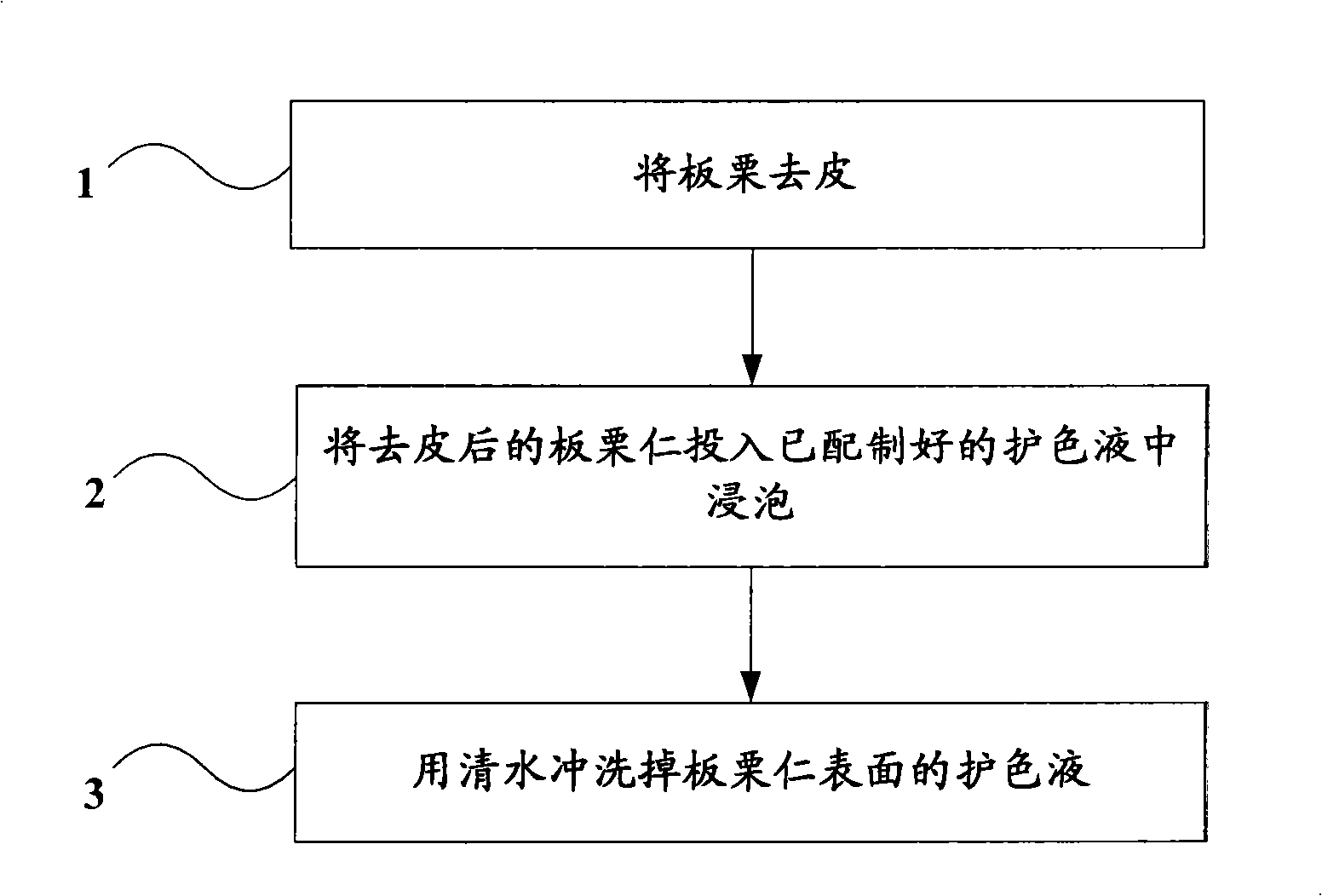Method for controlling browning of Chinese chestnut
A chestnut and browning technology, which is applied in the field of chestnut food processing and control of chestnut browning, can solve the problems of chestnuts not being resistant to storage, and there is no storage and preservation method for chestnuts, and achieve the effect of strong antioxidant capacity
- Summary
- Abstract
- Description
- Claims
- Application Information
AI Technical Summary
Problems solved by technology
Method used
Image
Examples
Embodiment 1
[0029] Dry the chestnuts at 60°C for 50 minutes to peel off the skin, put the peeled chestnut kernels into the tea polyphenol color protection solution with a weight volume concentration of 0.02%, soak at 25°C for 40 minutes, and rinse off the chestnut kernels with water Tea polyphenol color protection solution on the surface.
Embodiment 2
[0031] Dry the chestnuts at 55°C for 55 minutes to peel off the skin, put the peeled chestnut kernels into the tea polyphenol color protection solution with a weight volume concentration of 0.015%, soak at 20°C for 50 minutes, and rinse off the chestnut kernels with water Tea polyphenol color protection solution on the surface.
Embodiment 3
[0033] Dry the chestnuts at 50°C for 60 minutes to peel off the skin, put the peeled chestnut kernels into the tea polyphenol color protection solution with a weight volume concentration of 0.03%, soak at 30°C for 60 minutes, and rinse the chestnut kernels with clean water Tea polyphenol color protection solution on the surface.
PUM
 Login to View More
Login to View More Abstract
Description
Claims
Application Information
 Login to View More
Login to View More - R&D
- Intellectual Property
- Life Sciences
- Materials
- Tech Scout
- Unparalleled Data Quality
- Higher Quality Content
- 60% Fewer Hallucinations
Browse by: Latest US Patents, China's latest patents, Technical Efficacy Thesaurus, Application Domain, Technology Topic, Popular Technical Reports.
© 2025 PatSnap. All rights reserved.Legal|Privacy policy|Modern Slavery Act Transparency Statement|Sitemap|About US| Contact US: help@patsnap.com

